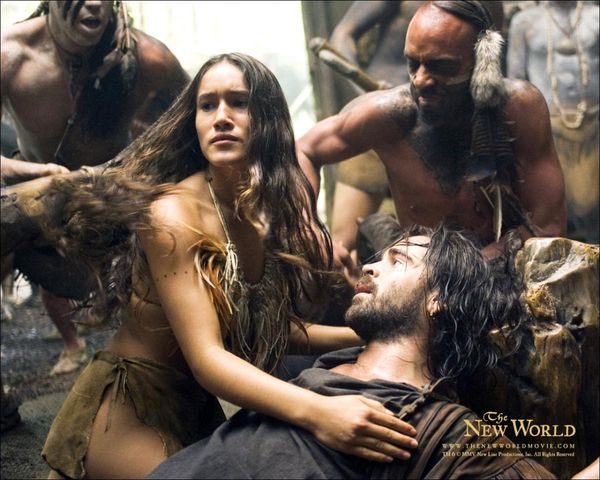The New World (2005)

“The New World” (2005): A Poetic Exploration of Conquest and Collision
Terrence Malick’s “The New World,” released in 2005, is a cinematic masterpiece that transcends the traditional boundaries of historical drama. Immersing the audience in the rich tapestry of 17th-century North America, the film offers a poetic and introspective exploration of the collision between Native American and European cultures, the consequences of colonial expansion, and the profound impact of those transformative events on the human experience.

At the heart of the narrative lies the story of Pocahontas, portrayed with captivating vulnerability by Q’orianka Kilcher, and her fateful encounter with the English settler, Captain John Smith, played by Colin Farrell. The film follows their journey, from the initial clash between their respective civilizations to the gradual unfolding of a profound, yet ill-fated, romantic connection.

Malick’s directorial approach is marked by a distinct visual style that emphasizes the natural grandeur of the landscape and the quiet, contemplative moments that punctuate the film’s more dramatic sequences. Through the use of voiceover narration and a minimalist approach to dialogue, the narrative unfolds in a lyrical, almost dreamlike manner, inviting the audience to immerse themselves in the sensory experience rather than relying solely on expository storytelling.

One of the film’s most remarkable achievements is its ability to capture the awe and wonder of the “new world” through the eyes of both the Native Americans and the European settlers. The lush, verdant forests, the serene rivers, and the vast, untamed wilderness are rendered with a reverence that imbues the film with a sense of timelessness, transcending the specific historical context.

Malick’s masterful use of cinematography, coupled with the evocative score by James Horner, creates a cinematic tapestry that is both visually stunning and emotionally resonant. The film’s pacing, which at times can be languid and contemplative, reflects the rhythm and pace of the characters’ journeys, allowing the audience to fully absorb the emotional weight of their experiences.

The performances in “The New World” are exceptional, with Kilcher and Farrell delivering nuanced and compelling portrayals of their respective characters. Kilcher’s Pocahontas is a revelation, capturing the innocence, grace, and resilience of a young woman caught between two vastly different worlds. Farrell’s John Smith, meanwhile, navigates the complexities of his role as a representative of colonial expansion, conveying the character’s internal conflicts and the gradual evolution of his perspectives.
Beyond the central narrative, “The New World” also explores the broader themes of cultural identity, the impact of colonization, and the human cost of progress. The film’s treatment of these complex issues is neither simplistic nor didactic; instead, Malick presents a nuanced and multilayered perspective that invites the audience to engage in deeper contemplation and introspection.
The film’s artistic ambition and its refusal to conform to conventional storytelling structures have earned it both critical acclaim and a devoted following among cinephiles. “The New World” stands as a testament to Malick’s singular vision and his ability to craft a cinematic experience that is both intellectually and emotionally resonant.
In conclusion, “The New World” is a remarkable cinematic achievement that transcends the boundaries of the historical drama genre. Terrence Malick’s poetic and introspective approach, coupled with the film’s stunning visuals and compelling performances, creates a profound and immersive exploration of the collision between cultures and the enduring impact of that collision on the human condition. This film is a must-see for anyone who appreciates the power of cinema to capture the complexities of the human experience.











